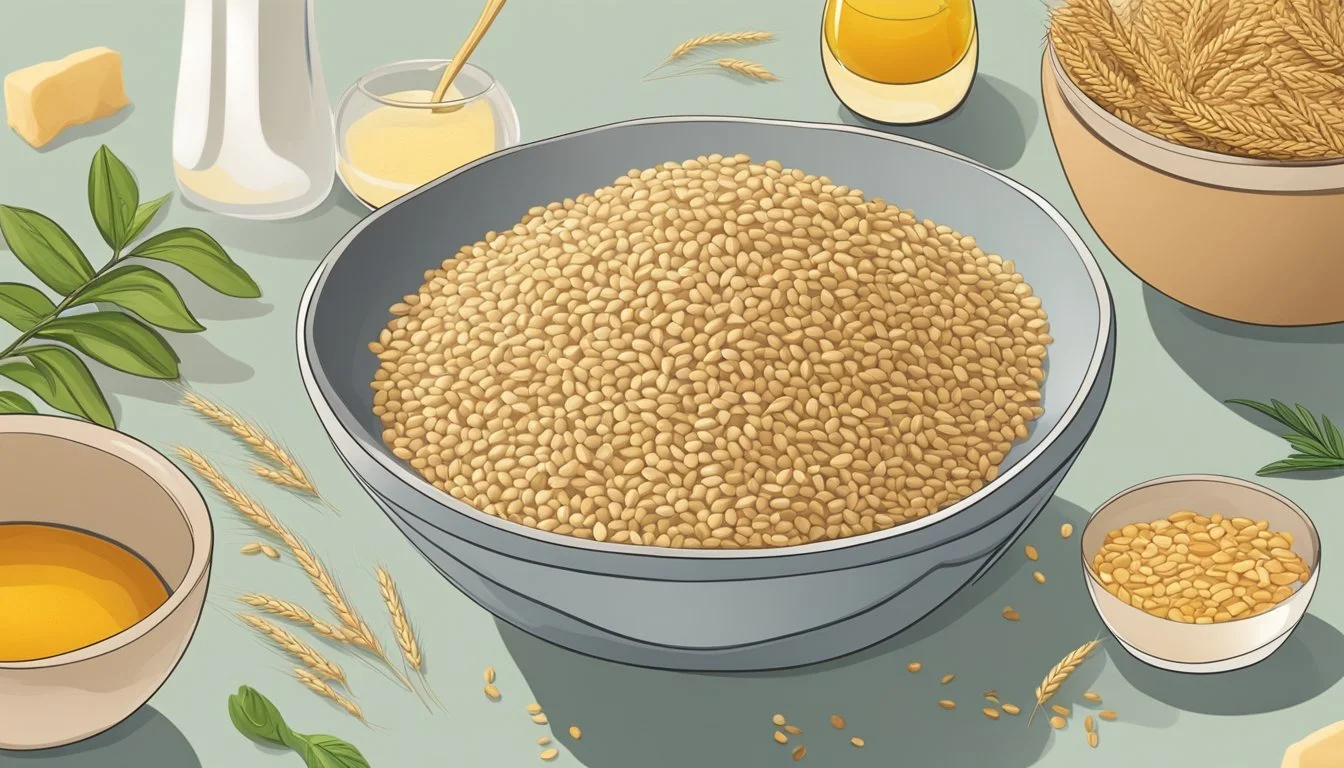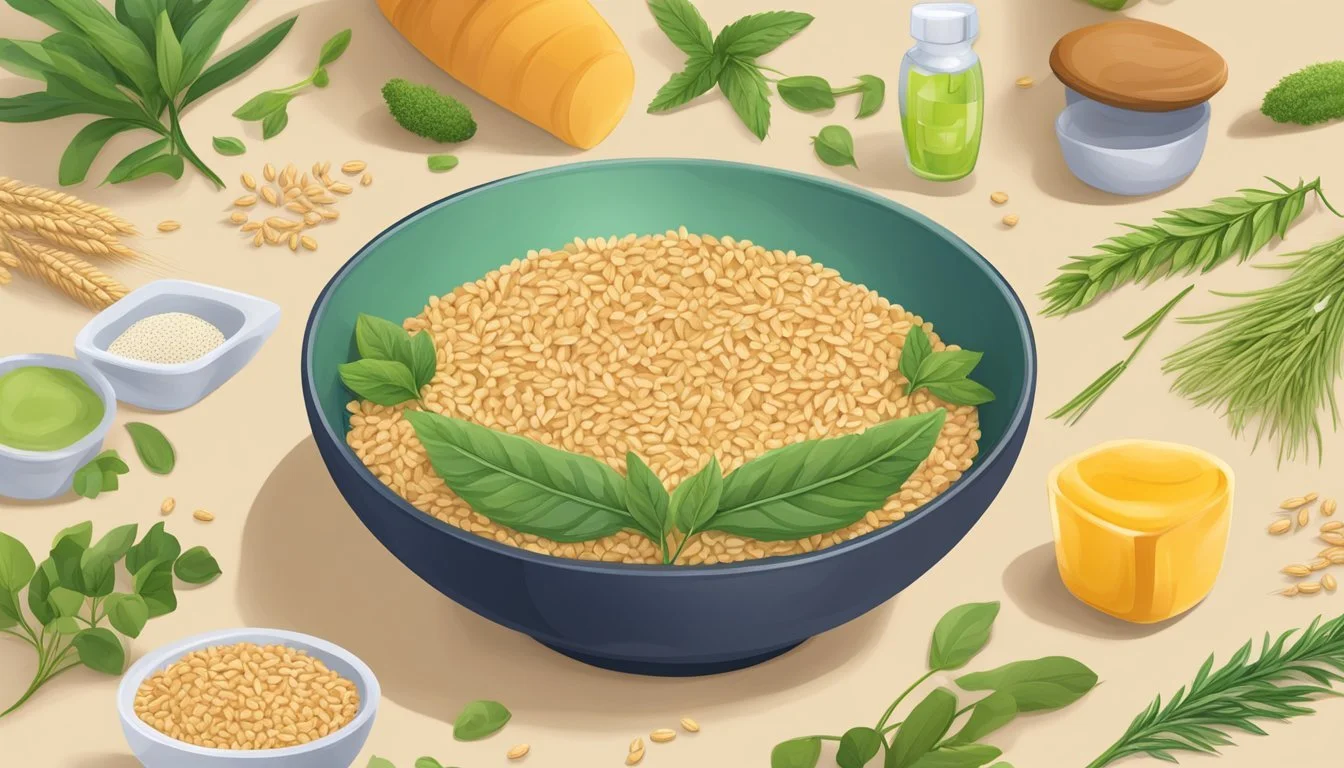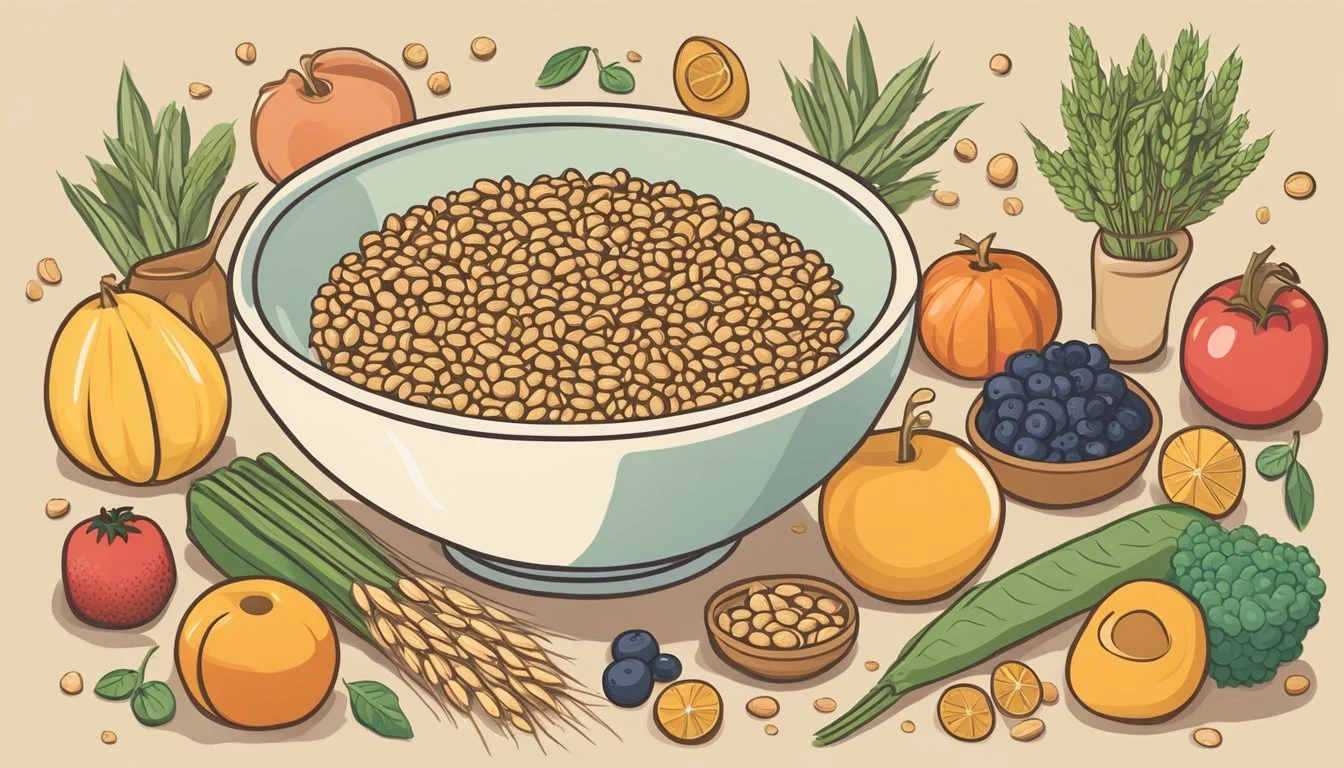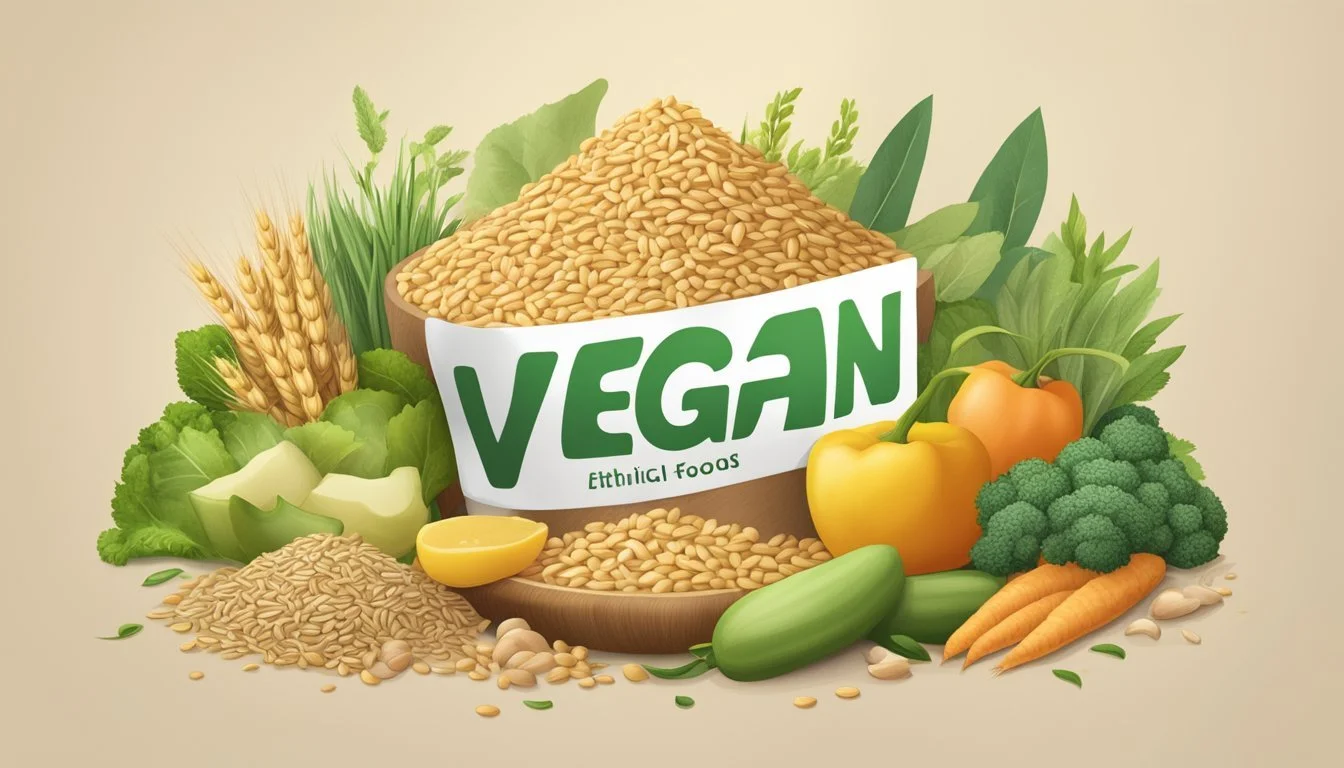Is Wheat Germ Vegan?
Unveiling the Plant-Based Status
Wheat germ is the nutrient-rich core of the wheat kernel, revered for its health benefits and dense nutritional profile, including vitamins, minerals, and proteins. Its position within a vegan diet, which excludes animal products, invites scrutiny due to potential misunderstandings about what qualifies as vegan. Wheat germ itself is a plant-derived ingredient, and its natural form is suitable for individuals following a vegan lifestyle.
However, when considering wheat germ for a vegan diet, one must be vigilant about the production process it has undergone, and any additional ingredients it may have been combined with. For example, some wheat germ products might be fortified with additional nutrients that may not align with vegan principles. Thorough examination of wheat germ and its by-products is essential to ensure they meet the requirements of a vegan diet.
Wheat Germ Basics
Wheat germ plays a crucial role in nutrition offering a dense source of vitamins and minerals. It is a byproduct of milling that enriches diets with its high-quality protein and fiber content.
Definition and Nutritional Profile
Wheat germ is the embryo of the wheat kernel, a byproduct of flour production often removed during the milling process. It represents only about 2.5% of the kernel's weight but is the most nutrient-dense part. Here's a breakdown of its nutritional profile:
Protein: An excellent source for vegetarians and vegans, providing essential amino acids.
Fiber: Wheat germ contains a notable amount of dietary fiber, relevant for digestive health.
B Vitamins: Rich in B vitamins like thiamin, folic acid, and B6, vital for energy metabolism.
Minerals: Supplies key minerals such as phosphorus, selenium, and zinc.
Nutritional Content per 2 tablespoons (Tbsp) of Wheat Germ:
Nutrient Amount Calories 57 Total Fat 1.6 grams (g) Saturated Fat 0 g Polyunsaturated Fat 1 g Protein 4.3 g Carbohydrates Variable Fiber Variable
Wheat Germ in the Food Industry
In the food industry, wheat germ is often valued for its nutritional enhancement properties. It is used to fortify a variety of food products, contributing to an increase in their protein, fiber, vitamin, and mineral content. A common feature in whole wheat and whole grain products, wheat germ enhances the overall nutritional profile while also catering to dietary restrictions that emphasize whole food ingredients.
Veganism and Diet
In the context of dietary choices, veganism represents a profound commitment to avoiding animal-derived ingredients, guided by both ethical and health considerations. This section explores the principles of veganism and the benefits associated with a vegan diet.
Veganism Defined
Veganism is a dietary and lifestyle choice that excludes all forms of animal exploitation and cruelty. This includes but is not limited to meat, dairy, eggs, and honey. Individuals who adopt this lifestyle avoid animal-derived ingredients and ensure that all aspects of their consumption, from food to clothing, are plant-based or synthetic.
Key attributes of veganism include:
Avoidance of all animal products
Commitment to ethical living
Focus on plant-based ingredients
Vegan Diet Benefits
A vegan diet offers a range of health benefits and can contribute to the prevention of certain diseases. Research has shown that individuals following a vegan diet may experience a lower risk of heart disease, certain types of cancer, and improved cholesterol levels.
Health benefits often associated with a vegan diet:
Improved heart health: Plant-based diets can lower the risk of high blood pressure and heart disease due to lower cholesterol levels.
Reduced risk of cancer: Some studies suggest that the vegan diet may contribute to a reduced risk of various types of cancer.
Better blood sugar control: A vegan diet can be rich in dietary fiber and complex carbohydrates, improving blood sugar levels and aiding in weight management.
It's essential for vegans to make informed choices to ensure they meet all dietary requirements. As each individual's dietary needs may vary, some may benefit from consulting a healthcare provider or nutritionist to address any potential nutritional gaps, such as those in protein, vitamins, and minerals.
Is Wheat Germ Vegan?
Wheat germ, the nutrient-rich core of the wheat kernel, is typically vegan as it is derived from the wheat plant, which does not involve any animal products.
Analyzing Wheat Germ
Wheat germ is extracted from the endosperm of the wheat grain and it is considered a plant-based food. For individuals adhering to a vegan diet, the primary concern is whether a food product contains any animal-derived ingredients. Wheat germ itself does not contain these ingredients, making it vegan-friendly. However, vegans should be mindful of the following when purchasing wheat germ products:
Label Examination: Always check labels for non-vegan additives.
Fortification: Some brands fortify their wheat germ with additional nutrients like iron. The source of these nutrients should be scrutinized.
Cross-Contamination: In facilities that process both animal and plant products, there's a risk of cross-contamination.
It is particularly crucial for vegan consumers to investigate any additional ingredients that may be included with wheat germ in prepared foods or mixes. It's common to see variations in the additives used, so attentiveness to the details on the label is essential. If a product simply lists 'wheat germ' without further animal-derived additions, it can be confidently considered vegan.
Health Considerations
When considering wheat germ as a part of a vegan diet, its nutritional benefits are a significant factor. However, it's also crucial to be aware of potential issues such as allergies and intolerances.
Wheat Germ Health Benefits
Wheat germ is the nutrient-packed core of wheat kernels and is a powerhouse of essential vitamins and minerals. It is especially renowned for its high fiber content, which is beneficial for heart health. A mere 2 tablespoons of wheat germ offer a substantive dose of antioxidants such as vitamin E and omega-3 fatty acids, known for their role in maintaining cellular health and supporting the immune system. The presence of minerals like iron, calcium, zinc, and magnesium contributes to a range of health benefits, including bone health and enzymatic function. Notably, it provides a modest calorie count, which contributes to energy without excessive calorie intake.
Essential vitamins: Vitamin E
Minerals: Iron, Calcium, Zinc, Magnesium
Other nutrients: Fiber, Antioxidants, Omega-3 Fatty Acids
Allergies and Intolerances
Despite its health benefits, wheat germ may not be suitable for all individuals. Those with celiac disease or gluten intolerance need to avoid wheat germ due to the presence of gluten, a protein that can cause adverse reactions in susceptible individuals. Symptoms of these conditions can range from mild discomfort to severe immune system responses. It's always advisable for those with allergies or intolerances to thoroughly check food labels and consult with healthcare providers to ensure that their dietary choices are safe and healthy.
Celiac Disease: Gluten found in wheat germ is harmful.
Gluten Intolerance: Mandatory avoidance of wheat germ due to gluten.
Culinary Uses of Wheat Germ
Wheat germ offers a nutritious boost to various recipes, particularly baked goods and alternative dishes, with its rich content of vitamins and minerals.
Wheat Germ in Baking
In baking, wheat germ is often incorporated for its nutritional benefits and subtle nutty flavor. It serves as a fortifying addition to whole wheat flour when making different types of bread, lending a rich texture and an increase in fiber content. Bakers may opt to sprinkle wheat germ on top of loaves or mix it directly into the dough.
To enhance the healthiness of muffins, wheat germ can be combined with ingredients like oatmeal, banana, nuts, and seeds. A typical recipe for wheat germ muffins might include:
1 cup of whole wheat flour
1/2 cup of wheat germ
1/4 cup of sugar
1 teaspoon of baking powder
1/2 teaspoon of salt
1/2 teaspoon of cinnamon
1 beaten egg
1 cup of milk
1/4 cup of canola oil
The process is straightforward; combine dry ingredients in one mixing bowl, wet ingredients in another, then fold wet ingredients into dry. Portion the batter using a measuring cup into a muffin tin coated with cooking spray and bake in a preheated oven until fluffy and golden.
Alternative Wheat Germ Recipes
Beyond baking, wheat germ can enhance a variety of other dishes. Its versatility extends to breakfast items like pancakes and yogurt, wherein it can be sprinkled on top for added texture and nutrients. For pancakes, wheat germ can be mixed into the batter along with vanilla extract and chocolate chips for a delicious meal.
It is also used in savory recipes, such as meatloaf or even as a breadcrumb substitute, giving dishes a nutritious twist. In meatloaf, substituting bread crumbs or bran with wheat germ not only improves the nutritional profile but also maintains the beloved texture. Another popular use is to add it to oatmeal, along with soy or milk, sugar, and fruits, enhancing the meal's health factor while keeping it tasty and satisfying.
Wheat Germ's Role in Specialty Diets
Wheat germ is embraced by various specialty diets due to its dense nutrient profile and versatility in meal preparation. With a rich composition of vitamins, minerals, and healthy fats, it can be a valuable addition for those following vegetarian and vegan meal plans or can pose certain limitations for gluten-free diets.
Wheat Germ for Vegetarians and Vegans
For vegetarians and vegans, wheat germ serves as a plant-based nutrient powerhouse. Being the nutrient-rich embryo of the wheat kernel, wheat germ is inherently vegan and aligns with the dietary restrictions of these lifestyles. It is high in whole grain values, providing essential nutrients such as fiber, plant-based protein, and healthy fats like omega-3 fatty acids, making it an excellent food choice for adding variety to a plant-based diet.
Nutrients in wheat germ beneficial to vegans and vegetarians:
Plant-based protein
Fiber
Healthy fats (including omega-3 fatty acids)
Vitamins (such as E and B-complex vitamins)
Minerals (like iron, zinc, and magnesium)
Additionally, incorporating wheat germ can help vegetarians and vegans meet their nutritional needs without relying on animal products.
Wheat Germ in Gluten-Free Diets
For individuals with celiac disease or those adhering to gluten-free diets, the status of wheat germ is more complex. Despite its health benefits, wheat germ is derived from wheat kernels and thus contains gluten, which makes it unsuitable for anyone with gluten sensitivity or celiac disease. These individuals must avoid wheat germ to prevent adverse health reactions.
Considerations for gluten-free diets:
Wheat germ contains gluten.
Unsuitable for people with celiac disease or gluten intolerance.
Alternative gluten-free grains must be sourced to replace the nutritional benefits of wheat germ in diets.
People following a gluten-free lifestyle need to seek out alternative sources of the nutrients that wheat germ provides. They often turn to grains such as quinoa, buckwheat, and brown rice, which offer similar health benefits without the gluten content.
Labeling and Processing Concerns
When considering whether wheat germ is vegan, it is critical to understand both food labels and potential processing complications. The processing methods and the risks of cross-contamination are central to determining the vegan status of wheat germ products.
Understanding Food Labels
Food labels are consumers' primary source of product content information. They must list all ingredients, additives, and flavors that could affect a product's vegan status. However, labels may not always disclose if animal-derived processing aids, such as bone char—often used to whiten sugar—are utilized in production. Moreover, labels indicating "natural flavors" can be ambiguous, as these flavors might be derived from either plant or animal sources. Vegans should seek products specifically labeled as vegan or check with manufacturers to ensure no animal-derived substances are included.
Key entities to look for on labels include:
Bone char
Additives and flavors
Natural ingredients
Cross-Contamination Risks
Cross-contamination can occur when vegan products are produced on shared equipment with non-vegan foods. Concerning wheat germ, cross-contamination risks arise during the milling process when whole wheat is converted to wheat germ and other by-products such as white flour. Facilities that process both vegan and non-vegan items may inadvertently cause vegan products to come into contact with animal-derived substances, compromising their vegan integrity.
To minimize cross-contamination, manufacturers should:
Thoroughly clean machinery between runs
Have dedicated equipment for vegan products
Offer transparency regarding their production practices
consumers concerned about strict vegan standards__may__wish_to seek products certified as vegan to avoid cross-contamination.
Environmental and Ethical Considerations
The decision to consume wheat germ as part of a vegan diet involves a broader discussion on sustainable agriculture and animal welfare. These choices reflect a commitment to minimize environmental impact and oppose animal exploitation.
Sustainable Agriculture
Sustainable agriculture practices are pivotal in producing plant-based foods like wheat germ, with an emphasis on maintaining environmental health. This includes:
Reducing greenhouse gas emissions (GHGE)
Conserving water resources
Promoting biodiversity
Agricultural activities for plant-based crops generally require less land and produce fewer emissions than livestock farming, aligning with the goal to foster a more sustainable environment.
Animal Welfare and Vegan Choices
Vegan choices, including the consumption of wheat germ, inherently reject animal exploitation. Vegans opt for:
Plant-based alternatives to support animal welfare
Foods that do not necessitate animal farming or harm
The choice to exclude all forms of animal-derived products stands as an informed choice to reduce the environmental impact associated with animal agriculture and to promote ethical treatment of animals.









